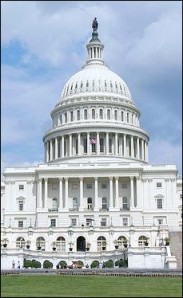Now that it is apparent that the three-judge panel’s congressional map for New York will in all likelihood be instituted for the 2012 congressional elections, action is happening in all four corners of the state.
First, Rep. Gary Ackerman (D-NY-5), after basically having the field cleared for him in the new 6th District, surprisingly announced last night that he will not seek re-election. Ackerman was first elected to the House in 1982 after serving one term in the NY Senate. He becomes the 42nd member not to be standing for re-election. One of those, Rep. Jean Schmidt (R-OH-2), was defeated in her primary. Including the Schmidt seat and the two vacant US House positions, those of former Rep. Gabrielle Giffords (D-AZ-8) and the late Rep. Donald Payne (D-NJ-10), the open seat count rises to 55.
The Ackerman retirement decision is a surprise for several reasons. First, it is incredulous that he waited until after redistricting was complete to make his intentions known when such knowledge would have made the legislators’ and court’s task easier in collapsing a seat, particularly since the Queens/Long Island area was targeted for district reduction. Second, GOP Rep. Bob Turner (R-NY-9) had already announced that he would launch a long-shot senatorial campaign rather than oppose Ackerman in the new, and highly Democratic, 6th District. Third, sate Assemblyman Rory Lancman (D), who had been planning to challenge Turner, said he would not run for Congress when the Republican and Ackerman were paired, and publicly endorsed his Democratic colleague for re-election. Now, with all of this breaking his way, Ackerman calls it quits.
But, it’s possible that Turner may soon be back. A very late entry into the Senate race, the congressman, like all of the other candidates, must garner 25 percent of the delegate vote at the New York state Republican Convention beginning today in Rochester. Attorney Wendy Long, who also is getting the Conservative Party ballot line, is estimated to be around the 23 percent mark; Nassau County Comptroller George Maragos appears to have more than 28 percent in delegate commitments. But, Turner, just entering the convention race, is barely over 8 percent, a long way from the minimum 25 percent needed for primary ballot placement. Should he not make the statewide ballot, Turner could pivot back into what is now, at least temporarily, an open 6th District seat.
In Rep. Peter King’s (R-NY-3) Nassau-Suffolk County seat, now labeled District 2 and much more Democratic than his current CD, opposition party leaders are attempting to recruit a strong candidate. Nassau County District Attorney Kathleen Rice appears to be the party’s first choice.
Upstate, the collapsing of retiring Rep. Maurice Hinchey’s (D) 22nd District has sent several candidates who were running for what they thought was an open seat scrambling to other districts.
Leslie Danks Burke, the Ithaca Town Democratic Party chair will now challenge freshman Rep. Tom Reed in the new 23rd District. The same is true for Tompkins County Legislator Nathan Shinagawa. The seat is more Democratic than Reed’s current 29th CD, but he begins the race as a strong favorite for re-election.
Democrat Wall Street attorney Sean Maloney, who was originally looking at challenging freshman Rep. Chris Gibson (R) in the Finger Lakes district will now run against freshman Nan Hayworth (R) in the Westchester County CD. For his part, Gibson will run in the new more Democratic 19th District. Matt Doheny, the 2010 nominee against Rep. Bill Owens (D-NY-23) will opt for a re-match in the new 21st District, which will be more to the Republican’s liking if he can get the incumbent into a one-on-one battle. In the Buffalo area, Rep. Kathy Hochul (D-NY-26), who was placed in a heavily Republican 27th District and speculation became rampant that she might challenge Rep. Brian Higgins (D-NY-27) in the new Buffalo center city district, says she will fight it out in the new 27th.
Expect much more to come next week when the GOP state convention ends and the Senate field of candidates is set.


